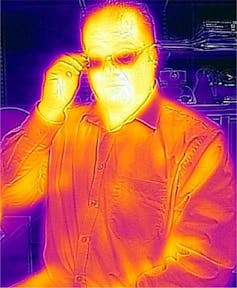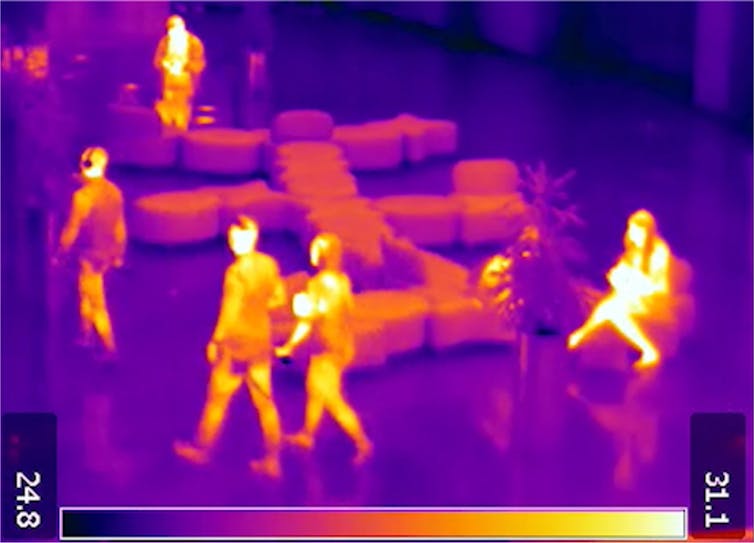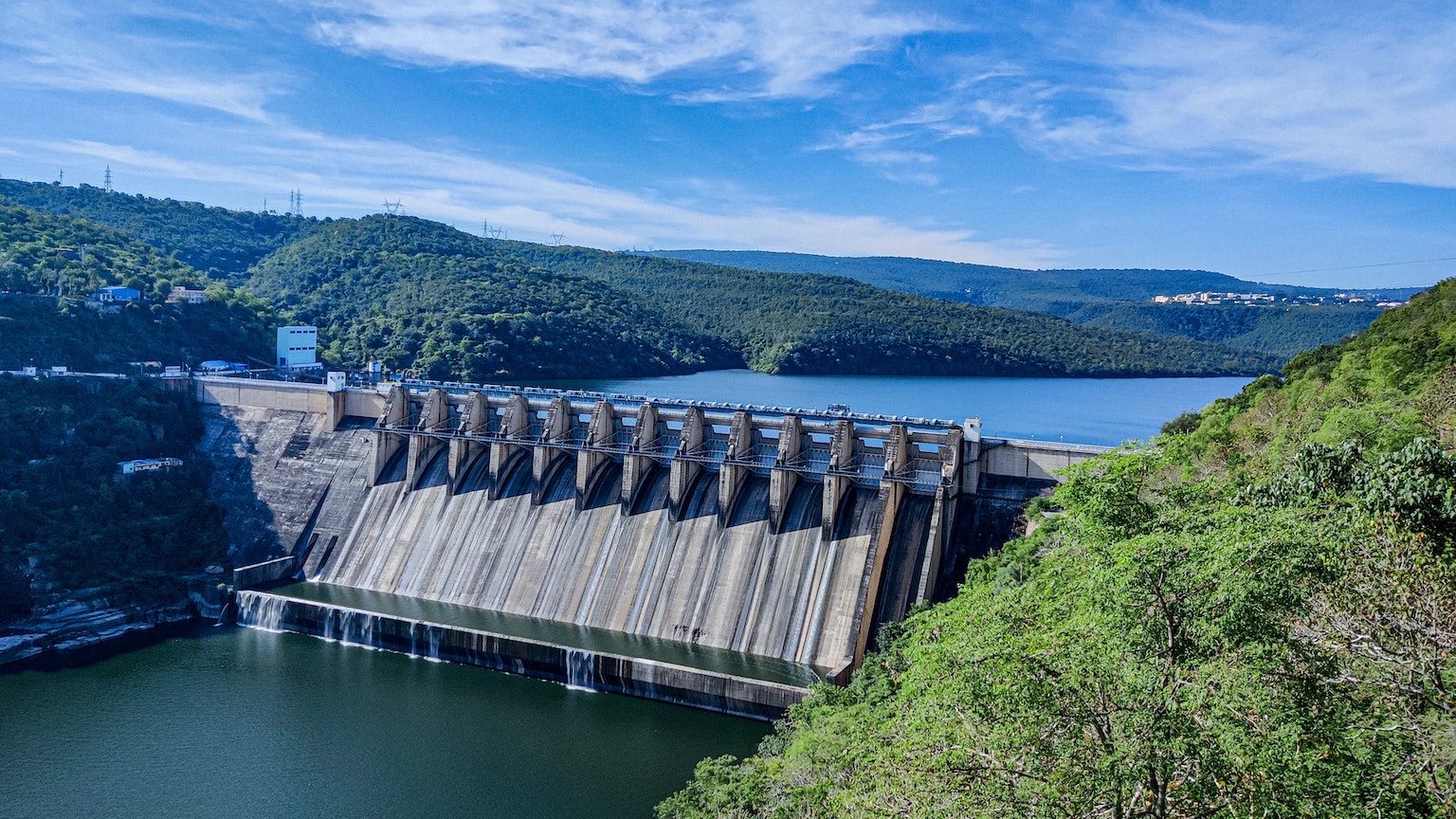How to use human energy to heat buildings

In the cult film The Matrix, unwitting humans’ body heat was siphoned off by machines to use as their energy source. Although that might not be the ideal situation to find ourselves in, the basis of the idea – using the warmth we generate to heat our buildings – could help fight climate change by cutting fossil fuel use.
Let’s look at the science. The average human body emits about 100 watts of heat at rest. When exercising, that heat can easily exceed 1,000 watts: energy that could boil one litre of water in six minutes. For comparison, a standard (3 kW) home kettle takes more than two minutes to heat a litre of water.
Where does that energy come from? Mostly, food. The body’s internal metabolism uses products of digestion, such as carbohydrates and fatty acids, to produce the energy that drives muscle contraction. However, about 70-95% of energy produced is released as heat. This shows that the human body isn’t very efficient at generating mechanical energy from food: in fact, it’s slightly less efficient than a petrol engine.
Much of this heat is removed from the body through convection, infrared radiation and sweating, which cools skin using evaporation. This explains why in extremely hot and humid conditions, you don’t feel comfortable – your sweat isn’t evaporating as easily into the saturated air.
Using infrared cameras, we’re able to see that heat as it moves from bodies to their surroundings. These cameras depict areas of increased heat (where more heat is being lost) as lighter in colour, and cooler areas as darker – showing us where most heat is being wasted.

When people gather indoors, this heat starts to accumulate. Imagine a theatre with a 500-person capacity. Assuming each person is producing 100 watts of thermal energy, this means 50 kW of heat will be emitted overall: equivalent to 25-30 average kitchen kettles continuously boiling water.
If those people are physically active – for example, dancing – together they could generate 150 kW of heat, or 3600 kWh over 24 hours. The average household in the UK consumes about 1,000 kWh of gas per month. Since an average domestic gas boiler has an approximately 30 kW output, just 500 dancers could produce the energy of five gas boilers.
The next question is how this human heat can best be used to warm buildings. Usually, buildings use ventilation or air conditioning systems to reduce temperatures and enhance air quality. This extracted heat is then lost to the outside environment, wasting energy. Instead, crowd heat could be extracted via mechanical heat exchangers – devices that transfer heat from one area to another – and used to heat incoming air in neighbouring buildings.

A more flexible option is to use heat pumps, which are a bit like reverse air conditioning systems that pump heat in instead of out. That heat can also be stored for later use, for example in water cylinders or modified bricks. Technology like this is already used in data centres, where the significant amounts of heat emitted by computer networks need to be extracted to avoid system failure.
Thermal energy in action
The concept of body heating systems is already a reality in some parts of the world. In Sweden, the Kungsbrohuset office building – located above Stockholm’s central subway station – is already partially heated by the body heat of daily travellers through the station, reducing its heating needs by 5-10%. A heat pump extracts heat from the station, where it’s stored in water that’s used for heating the offices above.
Meanwhile, in Mall of America in Minnesota, energy from sunlight and the heat of over 40 million annual visitors has replaced central heating. And the BODYHEAT system, currently undergoing installation at an arts centre in Glasgow, uses heat pumps to capture clubbers’ thermal energy and store it in underground boreholes that will provide the building with heat and hot water.

I’ve studied the heating system at Nottingham Playhouse, with an auditorium capacity of 750 people. We found that as audience numbers increase inside the theatre, so does the temperature, meaning that the central heating can be lowered on nights with packed crowds. Using this principle, we can develop “smart buildings” able to adjust their heating based on the number of people in a room and the expected resulting increase in temperature. This simple solution can be used in many types of buildings – even those without heat pumps installed.
With the recent hike in energy prices and the global push towards reaching net zero carbon emissions, systems like these could provide a simple and revolutionary way to cut fossil fuel use and lower energy bills by making use of the wasted heat that fills busy public spaces.
This article is republished from The Conversation under a Creative Commons license. Read the original article.





